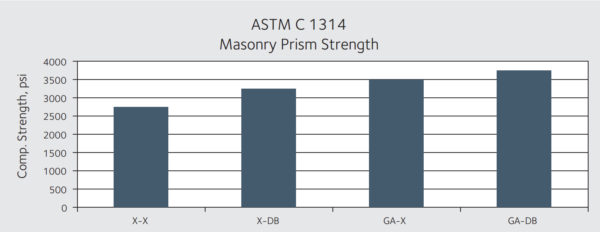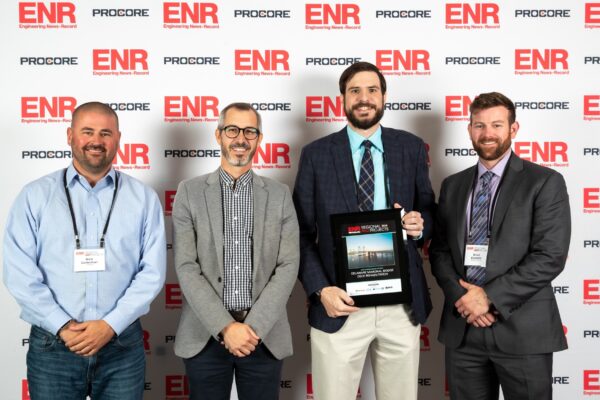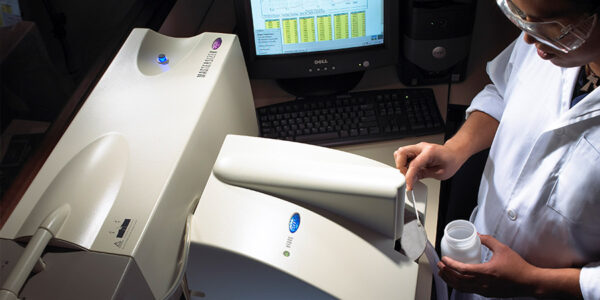Grout Bond Strength of Masonry Containing DRY-BLOCK® – TB-0017A

Concrete masonry is often filled with grout to increase its structural performance. The high water content of the grout not only facilitates placement, but it also helps compensate for highly absorptive concrete masonry units (CMU) allowing for adequate compressive strength and bonding.
Often times masonry containing DRY-BLOCK® admixtures is grouted. However, because the CMU and mortar are less absorptive, questions arise as to whether adequate compressive strength and bond are achieved. DRY-BLOCK®masonry is designed to withstand approximately two inches of hydrostatic head pressure, which is equivalent to a +60 mph wind driven rain conducted in accordance with ASTM E 514 Standard Test Method for Water Penetration and Leakage Through Masonry. Grout, when properly placed, typically exerts hydrostatic head pressures greater than two inches. Thus, rather than the CMU pulling the water and cement paste into its matrix, it is pushed or forced into the CMU. This mechanism creates intimate contact between the grout and the CMU and ensures adequate performance.
Independent tests, conducted at the National Concrete Masonry Association Research and Development Laboratory, support this fact. Concrete masonry prisms (two block high) and piers (six block high) were constructed using CMU and mortar with and without DRY-BLOCK® admixtures. Coarse grout, with and without a water-reducing, expansive grout admixture, was mixed according to requirements stated in ASTM C 476 Standard Specification for Grout for Masonry. The DRY-BLOCK® and non-DRY-BLOCK® prisms and piers were each filled with the plain and admixed grout. Neither DRY-BLOCK® Block nor DRY-BLOCK® Mortar Admixtures were added to the grout.
The grout was tested in accordance with ASTM C 1019 Standard Test Method for Sampling and Testing Grout. The compressive strength of the masonry prisms was determined in accordance with ASTM C 1314 Standard Test Method for Compressive Strength of Masonry Prisms. Finally, the grout bond shear strength of the piers was determined following guidelines of the California Code of Regulations, (CCR) State Chapter 2405 (c) 3.C.
The results from these tests are illustrated in the tables on the reverse side of this technical bulletin. In summary, the addition of DRY-BLOCK® admixtures to the CMU and mortar does not compromise the compressive strength of the grout, the compressive strength of the masonry prisms or the bond between the grout and CMU.



XX-X = Plain grout/Non-DRY-BLOCK® CMU & Mortar; X-DB = Plain grout/DRY-BLOCK® CMU & Mortar
GA-X = Grout admixture/Non-DRY-BLOCK® CMU & Mortar; GA-DB = Grout admixture/DRY-BLOCK® CMU & Mortar





